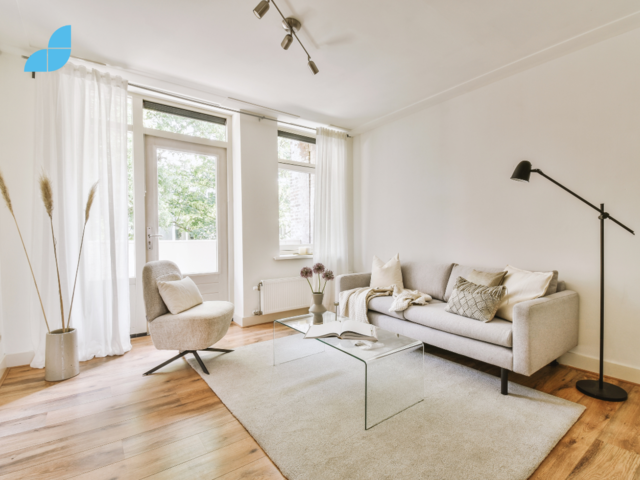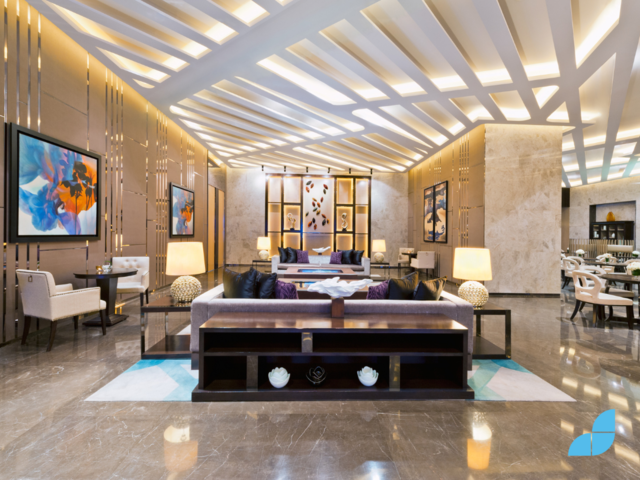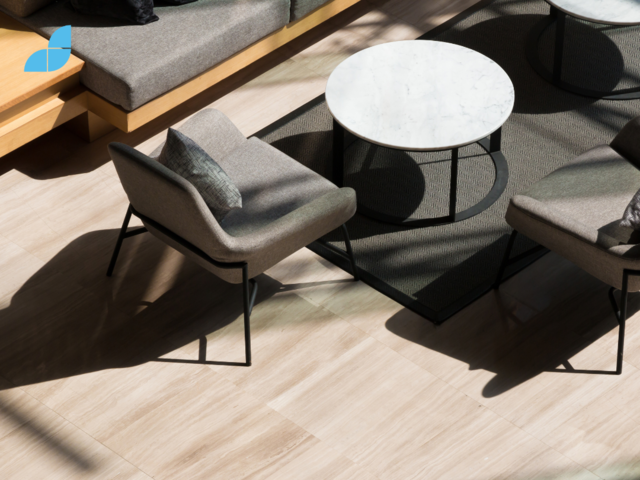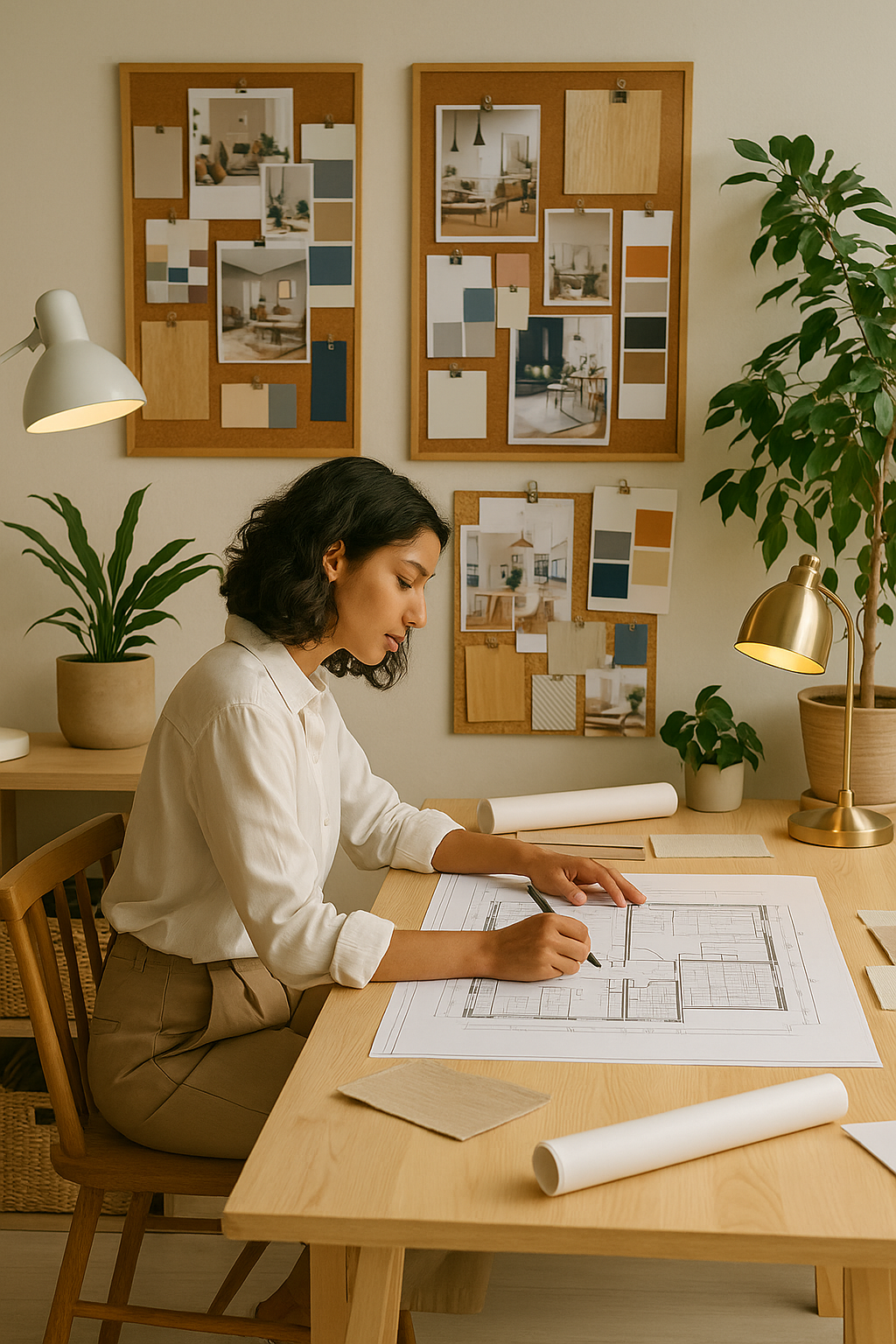For an interior design to stand out, whether residential or commercial, there must be that extra something, that overall characteristic that makes it shine. This is known as the finish. In order to achieve that ‘finished’ look, there are details and design touches that need attention. Here are some important factors that contribute to a finished look in both residential and commercial spaces.

Consistency
Consistency will not only create a sense of cohesion and balance, but it will also display the care and attention that a designer has given to the entire space. This can be achieved by employing a uniform colour palette, repetition of certain elements or materials, and adhering to a specific design style across the space. With no one area neglected and no elements that seem out of place, consistency offers that professional finish.
Layering
Layering is the process of adding rugs to hardwood floors, throw-pillows and blankets on soft furniture, the stacking of window treatments, or artwork and accessories for example. These layers create additional depth to a design giving it a new aesthetic dimension.
Lighting
Lighting should not be overlooked and can be the very element that makes a design pop. To create a tiered lighting appearance, use ceiling lights, wall lights, table lamps, and floor lamps. Ambient, task, or accent lighting are a mainstay in any professional interior design and can be the ultimate design element for achieving that finished look. The right lighting will generate a mood and will control the atmosphere of a space.
Furniture arranging
This is an area that deserves very careful consideration as it can dictate the entire style of a space. There must also be a sense of flow where movement around the furniture is logical and easy yet inviting enough to create a desire to sit, eat, interact or use in whatever way it is intended. Furniture must be proportionate to the size of the space and relevant to the use of the room.

Wall treatments
While wall treatments need to be handled with care, empty walls can make a room feel unfinished. Treatments such as paint, wallpaper, wall decals, or artwork can not only add personality to a design but can create that finished look where every aspect of the space has been considered. Choose wisely and hang or display your chosen wall art in a thoughtful and careful layout. The wall treatments will need to complement the rest of the design.
Window treatments
Window treatments serve a function but with a little imagination they can be elevated to beautifully creative additions to a room. Curtains and blinds are useful for providing privacy and light control but they can also provide colour, pattern, and texture to the space. Think outside the box and play around with different fabrics and materials. A window treatment can become a focal point while also completing a look.
Attention to detail
The finish is in the detail! Paying attention to areas that are often overlooked is the key to creating a space that feels as though it was created with love. Gradually finding small visual treats can give a room layers of personality and intrigue. Kickboards, light switches, door handles and sconces are just some examples that can really elevate the overall design and often tie other elements together in harmony.

Personal touches
Personal touches will be the flourish that not only makes a space unique, but it also makes it feel like the user has been considered throughout the design process. Displaying family photos, precious objets d’art, books, or paintings are good examples but there are endless possibilities depending on the interests of the client.
Greenery
There is no room in a building where plants won’t create a sense of comfort and a lived-in feeling. Plants will always elevate a space and make it feel more lively and cared for. Plants will improve air quality and by inviting nature inside, the design is creating a connection with the earth. Plants and flowers offer colour and texture to an area and can soften its appearance.
Functional design
And finally, function. While a strong aesthetic may be at the forefront of many designers' minds, if a space is not fit for purpose, it is not a successful design. Taking the user's needs into consideration is the number one factor in creating a complete design. This involves ample storage, pleasant seating areas and room for movement. Style and function can be happily married when one truly compliments the other.
When all of these aspects come together, they produce a space that is both functional and beautiful. When a room has that ‘finished’ feeling, it means that pleasure can be gained again and again as more time is spent in the room discovering new details or design decisions.
To learn more about creating that finish, check out our Interior Design courses. Our course advisors are on hand ready to answer any questions so go ahead and take that leap!

